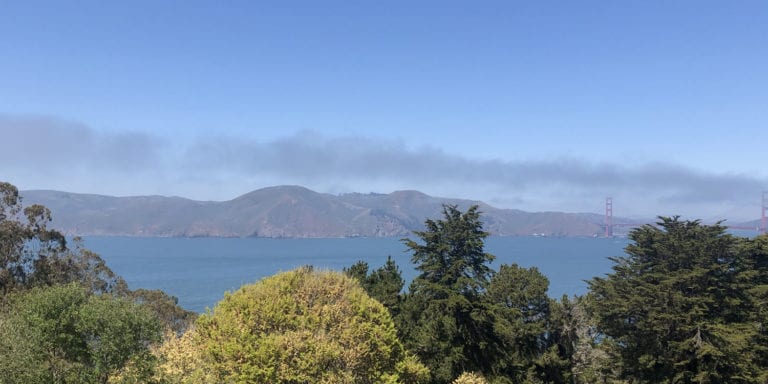
Friday, April 23rd.
It is a chilly bright blue morning up here. The wood fire is almost out. I looked and there was a big chunk of charred log still in it. I must have overdampered last night. The fire didn’t stay hot enough to get the wood ignited properly when I tossed it in at bedtime and closed the dampers.
I thought last night would be the final fire. It looks like I’ll have one tonight as well. LOL…
Friday…a week ago I was in Walnut Creek looking at treasures in Laurelle Swan’s shop before spending the day in Sonoma and Napa.
The books I found irresistible will arrive today and look like this:
They’re to arrive today, I’m told.
I opened my portrait done by Alan James Robinson. It’s gorgeous!
Except my face. Maybe Botox would be helpful?
I opened the portrait of Barbara too.
Perfect.
I noticed some autographed sports books Ernest put on a cart for me to inspect.
Childhood heroes. John Roseboro, LA Dodgers catcher. Maury Wills, Dodgers shortstop, who broke all the records stealing bases. OJ Simpson, Buffalo Bills running back (before moving on to other things.) Bert Jones, Baltimore Colts quarterback.
The Dodgers were always “my team.” They had moved to LA from Brooklyn before I was old enough to be conscious of it. But my first little league team was the Dodgers, so that sealed my loyalty. I would follow them in the Buffalo Courier Express newspaper. Often the night games were too late for the score to be in. I would study the Box Score if there was one.
I learned what all the numbers and abbreviations meant. If they won, my day was off to a great start. If they lost, I would be moody or grumpy.
Sandy Koufax, Don Drysdale, Walter Alston, Willie Davis, Tommy Davis, Wes Parker… I dreamed of seeing a game in person. Occasionally a game would be broadcast on TV. We had black-and-white TV until I pretty old. The grayish figures were fuzzy, but it was satisfying.
OJ Simpson. I grew up in Buffalo, and the only big league team was the Bills. I would often listen to their games lying in a field across the street from home. I’d press the little plastic transistor radio to my ear. Green grass below me. Blue skies above.
Bert Jones. We left Baltimore in 1968. I was so glad to get out of the Catholic school there. I was the only Protestant, and Sister John Anthony would target me and insult me and occasionally thrash me. She was all of 4’10”. She had a very long nose, and her chin jutted out just as far. But I still followed the Colts, and Jones led them to Division Championships 3 years in a row in the mid-70s. In 1976, he was MVP and won just about every stat in the NFL. Then he was injured and never played great again.
And yesterday Annika told me the autographed William Osler—which was almost the first book I came across upon arriving from the airport Tuesday morning—was an important copy. I didn’t have time to study the reason she had printed out. But I’ll get into that later.
I planted the rest of the lilies at the warehouse. I put in a lot at home. It is getting late, but not too late. There are dozens popping up on the mountain already. Some are in clumps from previous years. I did put a lot in during December as well.
The garden fireworks should continue up here til July. After that, there’s not much cultivated going on. The forest floor will be covered in huge swaths of native fern. The forest canopy near impenetrable green. Green above. Green below.
At the warehouse, there will tomatoes and squash and herbs…
Tomatoes. I learned about planting them from my father.
Thursday, April 22nd.
Spring is glorious up here.
There is a small flock of blue jays on the porch roof outside my window. I haven’t seen them since fall. Their harsh screeches and rough play belie their blue, black and gray beauty.
There is a fire in the woodstove. I thought I was done. But a cold front blew in yesterday, and there were frost warnings. When I got home, I pulled a chainsaw from the barn and cut the scruffy branches on the driveway outside the side porch and on the front porch. I burned everything around the house last night. The drive and porch are clear but for sawdust and leaves that need to be blown off.
I slept through til 6. There was a sweet dream. I wish I could go and live in that place.
But I am meant to be in this world.
Meant to be…
If I hadn’t pressed the issue and reached out for an earlyish vaccination, I might not have gotten on a plane—nearly on impulse—to go see my brother. The understanding was he still had weeks or months.
If I hadn’t gone to San Francisco, I would never have seen my brother again.
But seeing him at the last and beyond…still affects me. I’ve been in a daze all week. I function well, but part of me is somewhere else. A dark place of doubt and fear. Sadness and loneliness.
Emptiness.
I am glad I have a place to go where I can keep part of me busy. There have been so many carts of old books for me to go through. I have sorted through many every day this week.
Two places to go—the gardens!
It is glorious up here.
So many garden successes.
Each day before I leave and upon returning home, I walk around the mountain and marvel at the things rising from the earth.
Dogtooth violets are popping up everywhere.
How many did I plant last fall? I’ll be sure to order more this summer.
The beginning of the last wave of daffodils is rolling in.
I need to put stakes out, so I know where to plant bulbs in the autumn. It wouldn’t do to dig and find damaged bulbs because I forgot there were already flowers planted in a given spot.
I need to plant more outlier clusters too. These are nearly random plantings out in the woods. They are like grace notes on the mountain. Little bits of color on the still dun forest floor that catch the eye and draw attention to themselves.
But there needs to be some aesthetic to the placement of new outlier plantings. They can’t be too close to each other or things look a little out of balance.
LOL…I’m already planning for next spring in the midst of this one!
San Francisco
Sunday, April 19th. 5 a.m. Where did the month go?
I’m on the 19th floor of the Hilton—Financial District. It is actually in Chinatown. Directly across the street far below, there is a park. Its buildings are in classic Asian style with scalloped rooflines. There is a wide footbridge from the 3rd level of the hotel which holds The Chinese Cultural Center (currently closed—COVID.) It crosses Kearney and lands in the chalk drawing covered playground. From there, Chinatown spreads far from left to right and further up a steep hill than I chose to walk.
Come dusk, the park fills with anonymous bundles—homeless people—wrapped in blankets and castoff clothes. It always cool here. 60 degrees in every season, it seems. Often, chilly damp fog pours in through the Golden Gate and flows over the city.
Last night, I passed a pair on the sidewalk at dusk. A bearded fat man—his drooping bare belly exposed from his partially undone pants to nearly his diaphragm (his pants undone because they couldn’t accommodate his girth)—was prodding another man supine on the pavement with his foot.
“Timmy! Timmy! You aw right?”
Timmy was bundled under a sprawling pile of many layers. Only a deeply tanned moonlike circle of Asian face was exposed. His countenance was in peaceful contentment. He didn’t react in any way to his friend’s foot poking into his ribs.
Was he dead? Strungout? Or just in a very deep sleep?
I walked on. There were plenty of San Francisco natives on the sidewalks who would know if someone should be called. In Frederick, I would likely call for help. But then, I don’t recall anyone camping on the streets there. I have seen drug abusers downtown—usually younger men—keel over on the sidewalks and lie there motionless. Police or ambulance always quickly respond.
Last week’s story was a rambling stream-of-consciousness thing. I couldn’t manage anything else given the time and circumstances. It has been edited and all the images added. Some parts were out of chronological order. It would help this make since if you haven’t read it already. Check it out if you have time.
These are the last words from last week’s story:
He always embraced technology. When the Kindle was threatening the printed word a dozen years ago, he prophesied books would soon disappear.
I argued with him.
He said: “You will be the last bookseller. When you are done, turn off the lights and lock the door.”
He wasn’t wrong about many technical things.
In 2021, Tony and Kathy’s home is full of books.
Including the opera, redwood, San Francisco and miniature books I kept sending him the last few years.”
Summing up Sunday.
I’m ready to get back to books and gardening and woodcutting.
And the East Coast.
The Trip
I arrived at SFO Airport Wednesday, April 14th after 9. I had planned to go to the hotel and crash. I would visit my brother in the morning, but my nephew had texted me before I took off from Dulles saying I should come directly to the house—if I “wanted to see him.”
That shocked me. But what could I do? I had to wait for the flight and rental car and drive into the city.
He lay on the hospital bed in the spare bedroom. He was peaceful. There were three comfortable chairs circling him. When I got to his side, it was all I could do to contain the outburst welling up in me. I was the baby brother. I couldn’t be the crybaby I had been as a child here.
“Tony, Chuckie’s here.” One of my nephews gently shook his shoulder. His eyes opened but didn’t turn or focus.
I spent a few hours there and then drove downtown. It was about 2 a.m. by the time I parked, checked in and fell into the vast cloud of white sheets, pillows and comforter.
Thursday morning, I headed back to San Francisco’s Noe Valley where their home is. I sat with him and caught up with the family. There was a young tall thin red-haired caregiver there to help with anything that needed to be done.
My nephews are mature men now. Separated in age from me by about the same gap I was from Tony and my oldest brother Joe. 12-15 years.
I sat with Tony awhile and chatted to him. Memories and thank yous. “I will miss you.”
I was the fifth person there, well, the sixth counting Tony.
I decided I could best serve him by going up to Marin.
Marin, where brother Jimmie’s glory days took place in the late 60s and 70s. Where his rock group, Seatrain, was going to be the next Beatles. Capitol Records banked on it by hiring George Martin to produce their next three albums.
The album cover below was shot in Marin.
Dad—MD, PhD, researcher, author, expert cardiologist was a hero to me.
Jim—rock star—was a hero. I knew him as a kid!
Those are Jim’s dogs—Cow and River.
That was a dreamlike time. Everyone was still alive. I hadn’t known any deaths.
(Well, my paternal grandfather died in the 20s. My mother’s parents perished in the Spanish Flu Epidemic. She spent her childhood in orphan homes and then with a foster mother.)
We followed Jim’s exploits in Rolling Stone and other publications and his frequent long-distance phone calls. There was no internet. There were no cell phones.
This is a song he wrote about Marin:
Outwear The Hills
Lyrics: Jim Roberts
Music: Andy Kulberg
Out where the hills roll down to where the sea rolls in
I stood alone, apart on the sand
All along the riverbed, you came up with waterbuckets
Overflowing in your hand
Sunset is done. Dances begin
Some gather wood for the fire
A carpenter hangs rusty tools in a bare tree
Down by the fire we dance us free, free
Sidewalks run blood!
Fear changes hands
A human flood
In the land where the streets are the home of the brave
A white knight, a black sun, and children of shadow
Chant in the rain
While I lean through the night at my window
Love, I want you near me
Need you not to leave
I can hear you breathing
The wind is in the trees
Out where the hills roll down to where the sea rolls in
Earthmama waves like a field of wheat
With the sun in her hair and a baby in her arms
And the new moon at her feet
New days begin. Life’s river runs
The Tree of Life gives her seed
The Peace bird alights in the branch of a pear tree
Children of God dance in the Light, forever free
Love, I need you near me
Want you not to leave
Can you hear me breathing?
The winds are in the tree
Forevermore, forevermore forevermore
Forevermore, forevermore
(repeat)
Marin, Thursday
I checked online and Muir Woods was not sold out. I made my way across the Golden Gate.
I walked and climbed and looked up and down. I felt as if I was with all my gone family in that forest cathedral.
The rest you know about from last week’s story.
Tony passed away Thursday night.
When I arrived at his home Friday morning, he was already gone. The hospital bed was stripped bare. The caregiver was being dismissed with many and profound thanks.
A nephew gave him a huge tip.
I edited the blog (what a nasty orcish sounding word) as best I could at the dining room table and sent it off.
We chatted, and although I was now only the fourth wheel there, I felt like a supernumerary.
They needed rest and not the distraction of a guest uncle.
Friday
There could be no planning for this trip, but I had reached out to a friend in Walnut Creek. If things worked out, I would come and look at her new bookshop. She’d offered to give me a tour of Sonoma and Napa after. She even offered to drive!
What a treat! I am always the driver—either alone or with whomever.
I left San Francisco and crossed the Bay Bridge toward Oakland.
The woman in the phone took me to Swan’s Fine Books.
Laurelle Swan came out to the parking lot and led me into her shop.
I was dazed but coherent.
The vision of beautiful books smacked me into consciousness.
The shop is astoundingly beautiful. I could have bought every single tome there.
EVERY one.
Really! Go visit!
Every book is appealing.
I limited myself to a small stack before I put the brakes on. Small if you consider about 15-20 inches thick and up to 20 inches tall a “small stack.”
Incorrigible.
Such places are rare jewels in this world.
GO!
Then we hopped in her car and headed northwest to Sonoma.
Planning last week with her, my only wish was to see MFK Fisher’s “Last House.” She is one of my favorite writers and literary characters. I’d reached out several years ago but was told via email that the Conservancy it is located on was closed due to the Sonoma Fires.
As we drove, I got a text from Maryland the blog was online but there wasn’t enough time to get the photos on before things closed up out there.
Oh, well. I’ll just be surprised.
We arrived at the entrance to the Bouverie Reserve. The online info was unclear if visiting was permitted. We turned onto the narrow drive.
There were no “No Trespassing” signs.
“The worst that could happen is we would get kicked out.”
After all, it is California—I don’t think we’d get shot.
But it is Northern California…
I’m not very bold about going places where I’m unsure of my welcome. My dad was different. He would walk into anything. Climb a fence…
A family story is he walked into the Buffalo Statler Hilton in 1960. He often (OFTEN) had his big German 35mm Exakta around his neck. Some aide thought he was there to photograph Nixon, and he was taken into a suite…
I never saw the pictures. And now I’m the only direct link to the legend.
Dad was a staunch democrat…
I urged my friend on.
“Look, it says ‘Parking Lot’ ahead. And there are Porta Potties.”
Confidence builders.
We got out, and there was a group of young people in hiking/forestry gear. They were in a circle in discussion. My guess is they were firefighters in training.
We greeted them and vice versa. They didn’t ask what we were doing there. We walked down a narrow gravel path to The Last House. I was looking over my shoulder frequently for the impending bust I anticipated.
Never happened. We got close—but not too close. There were several cars parked next to it. Someone might be living there. My dad would have been on the front porch shooting pictures through the windows.
I was gratified to be there at all—so close to the woman with whom I have spent so many hours.
Laurelle had planned the rest of the day. The plans were truncated because I’d arrived so much later than planned.
She knew of a narrow road that crossed the mountain from Sonoma to Napa Valley. The talking computer on her dashboard discovered it, and we spent an hour winding up and down, round and round on a road not much wider than the Toyota. So much of the mountain was forested by blackened skeletons of dead trees caught up in the Sonoma fires a few years ago.
Soon we were descending into Napa with some astounding views.
Only it was not the Napa Valley. My phone and/or her dashboard had missed a turn, and we ended up back in the Sonoma Valley…LOL.
It had been a beautiful but stressful byway—much like Irish roadways in the mountains of Dingle or Connemara. Only no flock of sheep blocked our way.
We considered giving the “goat path” another go, but I urged caution. If the drive had stressed me as a passenger, the driver must have been worn by frequent narrow pull offs to let someone pass us or get by coming toward us.
It was unforgettable. If I ever return to Napa—which I’ve tried to encourage friends to join me to for years—I will likely take that trail again.
“Let’s go the long way around to Napa. We have plenty of time til our dinner reservation.”
So we headed north and then, at Calistoga, east and then south through Napa. We passed dozens of vineyards but all seemed COVID closed or were closing at 5.
We pulled into the Press Restaurant in St Helena and had the finest dining I can recall since the 21 Club in 2019.
I am a bit of a wine snob and drink mostly European wines. French, Spanish, Italian, Sicilian. I know California wines are just a good.
But there’s something about grapes and sun and soil in vineyards far more ancient than modern “California.”
I asked Laurelle to choose. The sommelier assisted.
https://www.frankfamilyvineyards.com/vineyards/winston-hill
It was expensive.
It was wonderful.
Saturday
I thought I’d do Tony’s memory best by visiting places he would take me to when I visited.
First, I walked around the hills of Chinatown. It was often difficult to tell which places were open, carryout or outdoor service only or closed—temporarily or permanently. A lot of places were boarded up or had their windows papered over.
Then I crossed into the shopping district. The block-long Macy’s was sheathed in black plywood. A whole city block of rough black painted plywood panels. But it was open! Small sheets of paper announced: “We Are Open.” And, indeed, I saw an occasional person pull open a plywood-covered door.
Such was the case in many more stores and hotels.
Boarded “Closed.” Or boarded “Open.”
The famous Drake Hotel was boarded “Shut.”
I made some other stops before heading to the Land’s End park. Walking along the bay side cliffs, I had tremendous views of Marin and the Golden Gate.
From here, you can see “where the hills roll down to where the sea rolls in”?
Then I made my way to the ocean side. The iconic 157-year-old Cliff House is COVID closed. They auctioned off the fixtures in March. If it ever reopens, it will be in a different incarnation. The views of Seal Rock were stunning, but the seals were elsewhere.
Then I drove down the coast before turning back and climbing (the car did the climbing) Twin Peaks.
Tony and Kathy’s house is just below that, and I headed over for a visit. Kathy and my nephews were still exhausted. After a while, I went downtown to my hotel.
Exhausted. I took a nap.
When I awoke, it was getting dark. They wanted to stay in and eat leftovers. I was in a mood for something exotic in Chinatown. I walked and walked. Some places had long lines. Some were carryout. Some I couldn’t figure what the deal was. I headed over to the Tenderloin and stopped in City Lights Books. The first words were gruff: “Sanitize Your Hands!”
I complied. I guess they hadn’t read the NY Times.
I crossed Kerouac Alley. It was filled with a dozen little tables. I started into the Vesuvio Bar, where so many Beats—and others—drank.
“We’re closed inside. Cocktails out in the alley only.”
I headed back toward the hotel.
That’s when I passed Timmy out cold on the sidewalk.
I walked for blocks around the Financial District, but almost all the restaurants were closed or too crowded or…
I stepped into Cafe Zoetrope.
A lot of Francis Ford Coppola stuff took place there.
I asked if I could order a cocktail.
“We’re closing up.”
It was 8:05 on a Saturday night.
I wandered into a dark Irish pub—The Kells—and had an Anchor Steam draft and Corned Beef and Cabbage. It was delicious. I finished with a Guinness, though I usually avoid the “black stuff” in the states. It is a pale (LOL) imitation of what you get in Ireland.
Sunday
It was to be another day in the sun trying to see sights.
It was a question of when to see them again. Trying to kill the day before retreating to the quiet house of my brother and his wife.
I planned to continue trips to places Tony had taken me and the family over the years. He had always been a great and knowledgeable guide.
The woman in my phone directed me to Fisherman’s Wharf.
It was bright and sunny. 60 degrees. A typical San Francisco day. It was late morning, and people started trickling onto the docks. So many of the big waterside restaurants were closed.
Forever or just until.
I walked the length of the tourist magnet. I walked out onto the most touristy area, Pier 39. Most of the little shops were open—the “pearl” places where you buy an oyster that is guaranteed to have a pearl inside. The ball cap shop. Knife shop. “World’s Greatest Magnet Store.” Bubba Gump’s… everything in the world you could possibly NOT need.
At the end of 39, there are docks and docking rafts where sea lions hang out.
There must have been 75. Most just lie in the sun on the big wooden rafts. One raft though is for juvenile mails to show their prowess. The entire time I watched, different ones would leap from the water and try to outmaneuver and push the dominant male over the edge.
The old bulls—much larger—just lay like enormous packed sardines on their own raft and bask.
Then I crossed the street and walked that strip to its end. I passed Ripley’s and Madame Tussauds. The CVS drugstore was completely boarded up in raw plywood. Small paper signs on the wooden doors stated: “We Are Open.”
Indeed, a couple girls stepped and pulled the door open, revealing a normal bright commercial scene inside.
I continued my walk to the other end and then returned to the center where I’d started. I’d considered getting chowder in a sour bread bowl or some other signature dish. It was about 11:30.
Nah… I wasn’t hungry.
I looked out onto the gorgeous bay one last time. Alcatraz—that dysfunctional pile of rocks dominates the view. Then across to Marin. The Golden Gate was blanketed in fog—the only cloud anywhere to be seen.
Where next? I checked the pocket map. Golden Gate Park. I checked my phone. She said the de Young Museum was open. I headed there. The park was very crowded with parents and kids, sports players, yoga and aerobic classes. The cars just crawled along. People who are no longer in fear were pouring out of their apartments and townhouses. Nancy Pelosi Way led me to the underground parking garage. I queued. But off to the side my eye was drawn to a sign: “Parking $15 Cash Only.” I pulled out of line and headed there.
“$15 is for all day,” the masked man said.
“Ok.” I gave him the money.
“How long you think you’ll be?”
“I’m sorry?”
“If you come back in two hours, I give you 5 back. You have tickets for de Young?”
“No.”
“You won’t get in. You can try calling, though. You will be just a couple hours? Leave by 2:30, and I’ll give you 5 back.”
“Ok.”
I walked across to the Japanese Gardens, but there was a long line. I crossed the street to the Botanical Gardens, and the line was not so long. In that park, I wandered the world from Australia to Chile. Ancient Plants. Temperate Asian Plants. The Redwood Grove. Rainforest. Coastal Mist. California Natives. Rhododendron Garden (perfect timing for that)—astonishing blooming Rhody “trees.”
In November 2015, I walked these gardens with my family and Tony. I recall vividly constantly texting photos back to a new friend in Maryland—a plant buff.
Things were so different then.
The gardens seemed a little sad. Maybe COVID had affected their treatment.
Still, it was a beautiful bright day. Almost warm enough to remove my sweater. It wasn’t very crowded. I took my time circling the “Flora” globe. It was blossom time for so many things.
It seems I’d seen every plant in the world. I looked at my phone. It had only taken an hour.
I crossed to the Japanese Tea Garden. The line was quite short now.
I went to the Tea House first and had a pot of Sencha Tea outdoors with blossoming plants and trees surrounding much like the cloud of linens in bed.
At a Tea House
In a Japanese Garden
Spring blossoms all about
We have circled the sun again
I have walked the world today
Brought to be planted here
Since last I came here
I have walked the world
Five times round the sun
There was someone then
The hot pot of Sencha tea
sets before me
a flowery backdrop behind
Sip slowly
The time passes swiftly
The trees will bloom again
Hot Sencha will warm another
When the world rounds again
Water trills and splashes nearby
Next year’s spring sun
will warm another in this spot
Sip slowly
Time passes swiftly
There is a sad story about these gardens:
Originally created as a “Japanese Village” exhibit for the 1894 California Midwinter International Exposition, the site originally spanned about one acre and showcased a Japanese style garden. When the fair closed, Japanese landscape architect Makoto Hagiwara and superintendent John McLaren reached a gentleman’s agreement, allowing Mr. Hagiwara to create and maintain a permanent Japanese style garden as a gift for posterity. He became caretaker of the property, pouring all of his personal wealth, passion, and creative talents into creating a garden of utmost perfection. Mr. Hagiwara expanded the garden to its current size of approximately 5 acres where he and his family lived for many years until 1942 when they, along with approximately 120,000 Japanese Americans, were forced to evacuate their homes and move into internment camps. When the war was over, the Hagiwara family was not allowed to return to their home at the tea garden and in subsequent years, many Hagiwara family treasures were removed and new additions were made.
https://www.japaneseteagardensf.com/about
And a happier tale about fortune cookies. Maybe they aren’t so fake after all? They have made us all laugh at one time or another.
The Fortune Cookie Story: According to family members, Mr. Hagiwara introduced fortune cookies to the United States from Japan in the 1890s or early 1900s. Initially, the cookies were made on site by hand using a special iron mold or kata. When demand grew, Mr. Hagiwara hired San Francisco confectioner Benkyodo to produce the fortune cookies in large quantities. Original fortune cookies made in Japan were savory rather than sweet, and it is believed that Benkyodo developed a vanilla recipe for Mr. Hagiwara to make it more appealing to Western palates, the flavor that is now widely popular across the U.S. The tradition of serving fortune cookies to Tea Garden visitors continues today; one is tucked inside every bowl of Japanese rice crackers or arare sold at the Tea House.
https://www.japaneseteagardensf.com/tea-house
I left the gardens and returned to my car. I gave the attendant a thumb up. He could now re-rent my spot for a full fifteen.
The day was aging, but it was too early to return to Tony’s house and sit with family who were resting, decompressing or discussing plans.
I went to the coast again. I was going to visit the Legion of Honor Museum, but it was still COVID Closed. There is a golf course there and paths wend through it. I walked to the cliffs and sat upon a bench. I looked across the Golden Gate to Marin one last time.
Out where the hills roll down to where the sea comes in.
Things move slow in this house now.
They are in decompression.
Recovery.
Short term planning.
Long term guessing.
I am an extraneous member.
I am here for duty. On call.
I am not being used.
(I just want to go home now.)
It is 6 p.m.
Still feels like 9 Eastern time.
I’m hungry.
(I just want to go home.)
Monday, April 19 6 a.m.
My internal clock had never really adjusted to Pacific Time, even though I had been here since last Wednesday night. The last two evenings I had taken it very easy. The hotel bar is closed. I don’t have a bottle in my room. (That’s a bit unusual.) I got back to the hotel about 9 last night. I read The Haunted Bookshop a bit. Looked at emails and news on the laptop. Played with Instagram on my phone. @wonderbookandvideo. @booksbythefoot. @merryandpippinlotr.
Oddly, the growth in followers has slowed dramatically in the last few weeks.
@wonder… 10,388
@books… 18,618
“me”… 904 …lol
It is not as much fun if the numbers are not rising steadily. Or at least in fits and starts.
I don’t know if it is seasonal. Or if the pictures I’m posting lately are not very inspiring. Or if there are just not many left who like pictures of pretty books and bookish things.
I will pack my meager belongings and leave this 19th floor in a few hours.
I haven’t bought anything. Except a green weather resistant cloth jacket with a hood at Muir Woods. It has a nice logo with a Redwood on it. The couple ahead me insisted on paying my way into the park with their pass. Total strangers. I felt a little uncomfortable but didn’t dispute my masked benefactors. As we walked away, I told them thanks and that I would spend the money in the gift shop.
And I did.
Plus some—on the jacket.
The only thing I will miss about the Dystopian Hilton is the comfortable king bed, and its clouds of white linen I have immersed myself in for 5 nights.
I had gone to the lobby only once. I had run out of coffee packs and shampoo and conditioner. I was given two big handfuls and juggled them back to my room.
Yesterday morning, Sunday, the elevators were extremely popular at 9 a.m. or so. I had little trouble getting on at 19, but the thing stopped at nearly every floor going down. By 17, there were four of us—the COVID maximum according to the spots on the floor. (And those spots were not nearly 6 feet apart.) At each stop, people would look in and assess and then back away. Halfway down, I patted my pockets. I’d left the car keys in the room. On floor 7, 3 people squeezed in out of frustration. I stepped out. Maybe the old couple who would not wait any longer thought I was protesting their overcrowding.
The landing on 7 held a young couple with 3 small children and 2 strollers. All the elevators going down would open their doors, and there was no way they could fit—even pre COVID. An “up” elevator eventually arrived.
“You should come up with me. You’ll never get on with all that stuff. That way you will own the elevator coming down.”
They thanked me profusely when I exited at 19.
I got my key and then took the “local” back down—stopping at nearly floor. Continuing the descent with the memory of the eyes of frustration I’d just left behind on every floor.
There was not an “express” elevator.
Monday
I have already checked in for my flight at 11:59 p.m. 15 long hours from now. An email from the airline urged me to.
A long day ahead. I hope I can do something useful.
…I need to rise and bathe and pack my meager belongings. Check out. My third visit to the lobby in a week. (I bypassed it all this time using the elevators to and from the underground parking.)
I’m to meet the family at 11. We are going to the morgue. The body needs to be identified. The sons are tasked with that. I will sit or stand with the sister-in-law I’ve known since I was 9 or 10. Once Tony is identified, the cremation can be scheduled—hopefully later in the week.
The older son returns to Vermont next Monday.
I didn’t know what I was facing.
I checked out of the hotel and headed to the family home.
At noon, we headed out. I did not know where. I was a passenger in back of the new blue Subaru they bought in extremis.
We were going to identify the body. The boys would. I would sit with Kathy and wait.
I was in the back seat. We pulled into a parking lot.
I got out, and we were at a tourist attraction.
I had been past this building but never realized its significance.
We wandered through the Columbarium.
I had no idea what that was until we walked in.
It was a death worship scene.
More so than Per Lachaise or the above ground graveyards I’d visited in Europe.
It was a bit overwhelming. More than overwhelming.
I wandered through and looked at thousands go death nooks.
This one caught my eye. A couple had included an omnibus edition of The Lord of the Rings and a vintage The Hobbit in the iconic jacket.
Others had toys or gags. Most were urns or boxes.
Then out. It was time to get down to business.
We were led to a fancy office with a big conference room table.
We were given brochures and two thick catalogs of things you can buy.
(I just want to go home.)
My nephews went to look at and identify my brother’s remains.
I was there to avoid that with my sister-in-law. We sat at a conference table looking at a catalog of all the different things you could do with your departed loved one.
You could send your loved one to Deep Space!
They also have all kinds of jewelry. Some hold bits of ash.
The boys returned after a while.
“He looks great.”
I had no idea they were going to “prepare” him. I thought “identify” meant looking in a drawer or something.
The four of us went to look. It was a bright pleasant room. All I remember it containing was a casket resting on a catafalque.
I stepped to it.
My legs nearly left me at the sight.
I knelt before him and said a prayer silently.
Then we were back at the conference room table.
They began discussing jewelry and necklaces containing ashes.
The representative was advising them on portions. Fractions of my brother’s ashes—still not burned in another room some paces away.
It was bizarre. But who knows what has meaning at that juncture? 4 or 5 necklaces were ordered. Each held about 1%—the representative told us.
Part of him was going back to Vermont where the family had so many happy years. I think 18%.
Most was going to stay in San Francisco until the boat trip. That was yet to be scheduled—probably in June.
A fancy wooden box was ordered.
Then came the forms. 10? 15?
“Check the spelling and sign here.”
Repeat…
I was useful when the states my dad and mom were born in were needed.
Dad—Texas.
Mom—Alabama.
SFO Midnight Flight
I leave this place at 11:59 p.m.
A long road has ended.
The last brother of three.
We were so close in the heart but so distant physically for decades.
(I just want to be home.)
After the Columbarium, they wanted to go find where the cremation would be.
San Francisco has no graveyards.
We drove south to a city called Colma. It is a town of the dead.
In 1912, they removed all the graveyards in San Francisco to here. For $10 the corpse and tombstone could be moved. Those who no longer had anyone that cared enough (or who hadn’t $10) were placed in mass graves.
This is where San Francisco still sends its dead.
You can’t even be cremated in San Francisco.
The Wiki page states the dead outnumber the living here 1000 to 1.
I was in the back seat of the new Subaru. My nephews and sister laughed at one of my brother’s last missions. He wanted to leave his wife with a new car that would cause no problems. It was apparently a funny scene worthy of Evelyn Waugh’s Loved Ones—one of Tony’s favorite books.
Tony, wheelchair-bound and ailing, wheeling and dealing on a car chosen off the showroom floor.
You can only imagine the salesman dealing with a dying man and a “deal.” A buyer with literally nothing to lose.
They laughed about it and bemoaned that the salesman had been unable to activate all the features.
Yet.
“We were too busy to get trained!”
Bizarre.
We wended our way south on the peninsula. Exhausted from all the forms and waiting and explaining.
You can’t just die out here.
You need permits.
I would laugh if it wouldn’t cause me to cry.
I waited outside while they went in to find out what to expect. I knew I would be of no use here. The cremation is on the weekend at best. There had been a slight misspelling of my brother’s middle name on a form. The representative hoped that wouldn’t slow things up.
“Doctors can be picky about Death Certificates. Send me a scan of an official document, and I’ll submit the correction today.”
The grounds were vast and beautiful. The main building was imposing—almost castle-like.
Behind it graveyards rose and spread far and wide.
I walked around the front a little and sat on a wall.
Colma—Dead Town
Upon a wall
before a chiseled stone edifice
I sit and wait some more.
My brother’s family is inside
checking on burning details
A chilly azure sky
I can smell the ocean nearby
Palm trees, agave and cacti
Woodlawn Memorial Park
Acres of brilliant green grass
sprouting small stone monoliths
thousands and thousands
Flowerbeds and white marble sculpture
Trilling fountains
An infinite waterfall cascades down a hill
It ends in a small pond
The water is pumped to the top
to fall, fall, fall again
Infinity flows
It is so complex to die here
Reams of forms
“Check the spelling. Sign here.”
He would mock this nonsense
He loved Waugh’s Loved One.
But this is not for him
Or me.
But for them.
Any little bit of care they yet can give
counts reams.
After decades and years together
Then months of decline
And the swift last days
They are exhausted.
The finish line is so close
They just want to get there
at the last
Well, it all worked out.
We had a fabulous meal at Original Joe’s Westlake in Daly City.
It was perfect. So retro. Perry Mason could have eaten here with Della and Paul Drake in the 1950s.
Tony was a child of the 50s.
We all ate and drank too much.
I think this was the first time “out” for them in a very long time.
I toasted Tony one last time.
Actually 3 times.
We headed back north to San Francisco.
There were still hours til my flight.
I sat at the dining room table and tapped away at this and then dozed.
(I just want to be home.)
The airport is eerily quiet near midnight.
There are no people at any gate but mine.
There is a bar open.
I had an Anchor Steam Draft.
A lifetime ago visiting my brother Jim out here after a road trip across the country with a Wonder Boy, I had an Anchor Steam beer. It was one of the first craft beers I experienced.
Full circle.
This day hit me like a two-by-four to the face.
I didn’t expect to see my brother Tony ever again.
It all hit me at once. There was nothing to divert or distract me.
I will crash on the plane.
I hope.
And awake in Virginia on Tuesday morning and restart my life.
Why?
What else is there to do?
A monastery?
I contemplate plenty already.
Any more contemplation, and I would explode.
This trip changed everything.
A new beginning at this age.
What will I find?
“I have hopes.”
What movie was that from?
The Bishop’s Wife?
No one reads Nathan anymore.
Doesn’t matter.
I have my books and my plants to comfort me there.
And my dogs. Merry and Pippin.
This first COVID trip has had many endings in it too.
I will never see you and you and you again.
And maybe not you and you and you.
I cannot see you ever again.
Tired. Sore. Feeling old and lonely. I doubt I will visit San Francisco again. I have seen it so many times.
And there will no longer be a place to hang my hat.
Descending into Dulles
It was just a 4-hour flight going east.
You add 3 hours to the clock, and it is a long night.
It has been a long last day of my first COVID trip.
Spring will be in full swing in the east. The east—where we have four seasons. Unlike California, which has but one.
Life is different now that I am the oldest and the last.
May my reign be long and peaceful and fruitful.
I got to the warehouse just before 9 a.m.
I was numb for many reasons.
But I wanted to work. I needed to.
One of the first cool books I came to was Aequanimitas—signed by William Osler. Dr. Osler was a favorite of my father’s. When I was in Montreal in 2019, I visited a museum wing dedicated to him.
He was obsessed with death. One display showed printed cards he had made. They were used to record the final moments of patients who were dying.
Did he find any answers?
No.
Neither have I.
I will work.
I will travel.
I left about three.
Exhausted.
I went home to take a nap before going to pick up Merry and Pippin.
The Redbuds are still in bloom.
There are plenty of new daffodils to come. The “late” daffodils.
Stepping inside, Barbara’s cactus had another brilliant red blossom.
I crept into bed and wrote parts of this.
Writing has brought great comfort and solace in recent years.
It has added new meaning to my life.
I’ll be glad to finish this chapter.
My next story will be about books. New discoveries or old memories.
I hope I will have lots of fun.
I’m glad I went to Tony. As painful and draining as it was, it brought great meaning to my life.
A Cautionary Tale.
Cautionary in how well he lived and fought and ended.
Cautionary in the reality that life is not an infinity waterfall. You run and run and run—and eventually you run out.
I cannot see how far that is yet.
I am grateful for that.
(I am so glad to be home.)
Addenda—in recent months Tony emailed me several stories he had written. I encouraged him to continue even into the last couple weeks.
This is my favorite.
Tomatoes
by Alton O Roberts
When I was about nine, we moved to a big house with a big yard. My father had the three of us boys dig up a garden behind the garage. We hated doing it. My old older brother actually complained the least. He was more of an athlete than I was, and he might have seen it as working out for football. I don’t know; we seldom spoke to each other. That was a pattern that lasted far into our old age. My younger brother was my best friend, also far into old age. He seemed to go hard for a little while and then just slip away. He would be there one minute, and then he was gone. By the time he got back home, no one remembered that how angry they had been, not even our father. Our youngest brother had not been born yet, so he was no help at all.
My father then did most of the planting. We usually had squash, peas, lettuce, broccoli, and some other things I didn’t like. But the little tomato plants attracted me. I liked their smell and the shape of their leaves. There were tiny hairs on their stems, and when you rubbed them, that great tomato smell came out and stuck to your fingers, and you could sniff them again hours later. I remember stakes and twine appearing. Fairly soon in the season, it was clear that my mother was going to be doing all the work in our garden. But she also tired of it, and weeds would almost take over the whole patch. This brought on a lot of yelling, as well as some pulling and hoeing. Much of the season, half of our garden was full of weeds while the other half looked pretty good. For some reason, I drifted toward the tomato plants. However, I got out there so seldom, they were overgrown with big weeds whenever I got there. I liked the little yellow flowers when they first appeared. I knew that these would be the tomatoes if all went well. When the tiny green balls start coming out all over, I thought it was interesting, but I didn’t much care about the fruit. (My older brother told me this, that tomatoes were fruit not vegetables. I thought he was probably lying.)
When some of the tomatoes showed up big and bright red, my father did something I would remember the rest of my life. They used sell these little blue cylinders of salt, only about an inch tall. We would take one out to the garden, and we ate the salted tomatoes like apples. After that, for all my life, only my mother’s potato salad tasted more like summer. It has always shocked me that they can sell those hard, sickly orange globes and call them tomatoes. Somehow, I always forget and buy them without thinking. Until I taste them. Then I long for those salted tomatoes of summers gone by.
I worked in restaurants from the day I was sixteen through all of college. I would always look to see if they had any good tomatoes when my lunch or dinner break came. They seldom did, so I would just have something else—beans and franks at HoJos, and cheesesteaks in Philadelphia were favorites.
I’ve been trying to grow those tomatoes ever since those early summers. In college, of course, I didn’t think much about it, until I would have a BLT. Then the hard orange slices just made me wish for the real thing.
Soon enough, I was married and starting a family. On Grand Island NY, we lived in a farmhouse that had been converted into a duplex. I was an English teacher and a math teacher, Bob, lived upstairs with his family. We both worked for our landlord during the summers. He was a gruff but interesting man. He had been the building engineer for the stock exchange building. During the crash of 1929, he said brokers told him to buy blue chip stocks as they were jumping out the windows. He became very wealthy and a constant set of contradictions. He wore bib overalls all his life, and I saw his wife sewing patches on them more than once. He had a Chrysler Imperial in the garage, but we kept an iron stove in the garage basement barely going with trash and scraps as fuel. He could barely see and was very hard of hearing. Their house was quite large, with a huge dock going out into the river. The dock was made of railroad ties, so it was substantial. He had two huge piles of those railroad ties that were as big as his house. My first summer job with him was to rotate hundreds of ties: the ones on the bottom had to be moved to the top so they wouldn’t rot. Each tie was a two-man job, and I worked with the math teacher. We also helped build a large deck along the house out to the pier—out of railroad ties! I learned a lot about construction from Mr. Lattner.
Our next job was to connect galvanized pipe from the garage/barn to a pipe that ran under the road and then attach about forty lengths of pipe out to the garden. It was about 100 feet back and about 300 feet over to the area that was to be plowed. When I first looked at that pile of pipe, I could not believe we would ever finish, but we did. Turning on the water and seeing it work the first time was pretty satisfying. I helped set up that water every summer and take it down every fall for all four years we lived there. Then came Mr. Lattner’s friend with the plow. He was a great old guy who laughed a lot. I remember a lesson he taught me about mosquitoes: “They don’t light if you don’t stop.” So, just keep working, and you won’t need bug spray!
Mr. Lattner sent me down to a section of town near the docks where there was a wholesale farm market. He said go to this certain vendor and pick up three flats of tomato plants. So, I went and asked for the “flats” even though I had no idea what a flat was. It turned out they were 2′ x 4′ x 2″ wooden trays with sixty tiny plants in each one. That’s 180 tomato plants! It was then I realized I would be learning a lot about the red fruit. Mr. Lattner seldom left his house, but he came out to show me how to plant 180 plants: dig holes 6″ deep and a two feet apart. Put a spoonful of MiracleGro in each hole. Fill the hole with water. (He had a 3′ hose attached to a trigger valve attached to a long hose that was attached to that water pipe. The water pipe had three or four, three-foot uprights. All of this so you would not have to bend down very often during the whole process.)
By the time you got to the end of the row, the water had soaked in. Then you take one of the plants, pull off all but the very top few leaves and throw it in the hole. Mound dirt over it so just the top inch or two and a few leaves were showing. The first year, I looked at this huge expanse of bare dirt with these little bits of leaves sticking up and thought, “No way could this work.”
We didn’t weed the garden much, just chopped at it with a hoe a few times. Bob showed me how, and why, to pinch off the suckers. I know Mrs. Lattner did some work out there, but I was teaching all day, so couldn’t swear to what she did. I did enjoy watering since it was hot in the summers on Grand Island. Hot enough that we got a small air conditioner, and I would spend evenings reading for my summer school graduate courses.
In what seemed to be not very long, the plants got tall and strong; then they bushed out. I really loved seeing the little green tomatoes. Before I thought possible, plants were falling over from the weight of the fruit as it ripened. I found those little cylinders of salt at the market and put one in my jeans pocket so that every time I went out back to weed or water or pick, I would eat a tomato in the orchard next to the field.
We planted other stuff, peppers, squash, lettuce, cucumbers, beans, onions, but I only really remember the tomatoes. We learned how to can: mostly tomatoes, but also green beans and pears from the orchard. I also made pickles from the cucumbers.
We had what seemed like an endless supply of tomatoes, big bright red ones, A few times a week, I would take a half peck basketful over to Mrs. Lattner and another basket to school. I just left them on the counter in the cafeteria for students and teachers. I always had an empty basket to take home after school. I talked several times about selling them in front of the house, but I always felt too guilty that the Lattners might see me selling “their” tomatoes. I had friends who bought 10″ plants at the garden store and carefully placed them in the ground. They usually got half as many fruits per plant as the Lattner method did. But in the end, hundreds were left to rot in the field, fertilizer for the next year.
We left Grand Island to go to Syracuse, where I attended more graduate school. We lived in a small apartment with our two kids. There was no place (or time) to do any gardening. After three years there, I was lucky enough to get a job teaching college in Vermont. We lived in an apartment with a pool and the boys learned to swim, but no garden yet. Then we bought a house from friends who were moving. Finally, we could dig a garden, and the boys were old enough to start helping. We had fairly good luck, but we were in an old rock quarry, and the soil was never very good. We did keep canning, even if we had to buy produce at the farmers’ market.
At this time we had very good friends, Jerry and Susan. We spent lots of time together and our children got along really well. Jerry and I both saw ourselves as “almost-real” Vermonters. As such, we planted large gardens, canned lots of stuff and basically, did what all young hippies did in the 70s. We read a lot and talked to neighbors trying to find out as many growing secrets as we could. I was told by one Vermont old timer that horse manure was the very best thing for tomatoes. So, Jerry and I decided we should try it. It happened that a mutual friend owned horses and lived about halfway in between us. Jerry had a brother, Eddie. In many ways, they were more like twins than brothers; they were that close. They even built their houses on a shared mountainside. Well somehow, Jerry convinced Eddie it would be a good idea to fill his old, tan VW Microbus full of horse manure, and all three of us could have a share. Eddie took out the seats, carefully covered the floor with feedbags, and off we went. We got to our friend’s place and backed the Microbus into the field and down a steep hill to the pile of tomato food we were seeking. We had each brought a shovel and quickly got to work. With all of us shoveling, it took very little time. Of course, we were all pretty competitive, so the stuff was flying. No one paid any attention to the feedbags that were supposed to protect the floor, and they all had slid out of place from the beginning.
My place was the farthest, so he drove that way first. We quickly opened all the windows to “air out” the bus. We, ourselves were so covered, but we didn’t know the extent of the stench we were spewing on the local roads. That is, until we got to our driveway, the driveway that was the only thing between our house and the neighbors. It was a hot day, so first we heard some choice words from my wife, Kathy. Then the neighbor looked out from her kitchen window. Next, her two boys came out to yell their comments. We backed the Microbus back to the garden and started shoveling. Too soon, it was time to drive all the way back to Jerry’s place and repeat the whole process. After stirring up the load, we noticed the smell was even worse. Long trip.
Two more loads to empty, two more wives to chat with, and it was time to clean out the Microbus. Many brooms, mops, brushes, sprays, and rags later, it was clear the aroma was there to stay. Eddie left all the doors and windows open for a week or two (It was Vermont, so you could do that.) He finally gave up and decided he had a farm car. The rusty old VW Microbus had that same distinct aroma until Eddie dragged it to the dump many years later. But Oh Boy, what tomatoes!
I had another great friend who had access to a huge field where he could plant vegetables. One year, I helped him plant tomatoes. The nursery plants he bought were even more ridiculous than the flats from Buffalo. It was a bundle of sixty tomato plants that looked like a bunch of eight-inch stalks of grass tied with a string. The bundle was about three inches in diameter with tiny leaves at the top and tiny roots on the bottom. The planting for these seemed even more ridiculous: pull a trench with a hoe, throw in a tomato stick every few feet, kick some dirt over it, and step on it just to one side of the plant, trying to leave the top leaves out about an inch or two. It felt like we were throwing straw in a field and expecting daffodils.
That summer, I learned how little you really have to do to start tomatoes and how much they want to grow. Without watering or weeding, we had endless tomatoes once more. And again, we canned tomatoes, made and canned spaghetti sauce, as well as the usual beans, pickles, etc. I thought I would always have those wonderful summer tomatoes fresh from the garden.
We moved back to Syracuse. (I know, no one has ever moved back on purpose to the town we called Mordor.) We had a huge lawn and three-acre tree lot. Unfortunately, there was so much work just to try to keep up with the grass and “weed trees,” we did not try planting a garden very often.
Several years later, we had the good fortune to move to San Francisco. Of course, we jumped at the chance. For many reasons, San Francisco is not very friendly to gardens; it’s cold and windy to begin with. And we had almost no yard at all. We had what little space there was covered with gravel. We planted a lime tree and a lemon tree that, over the years, have been very prolific. We tried tomatoes several times without much luck. The best we had, believe it or not, was an “As seen on TV” upside down planting system! Another year, we got more cherry tomatoes from a volunteer plant when the previous year’s plant had very few.
This year, we have set up two large planters, one in the back garden and one on the front porch. So far, so good. We have about 20 green tomatoes on the plants. I’m caring for them very carefully—behavior I mocked in others in the past.
Let’s see what happens.

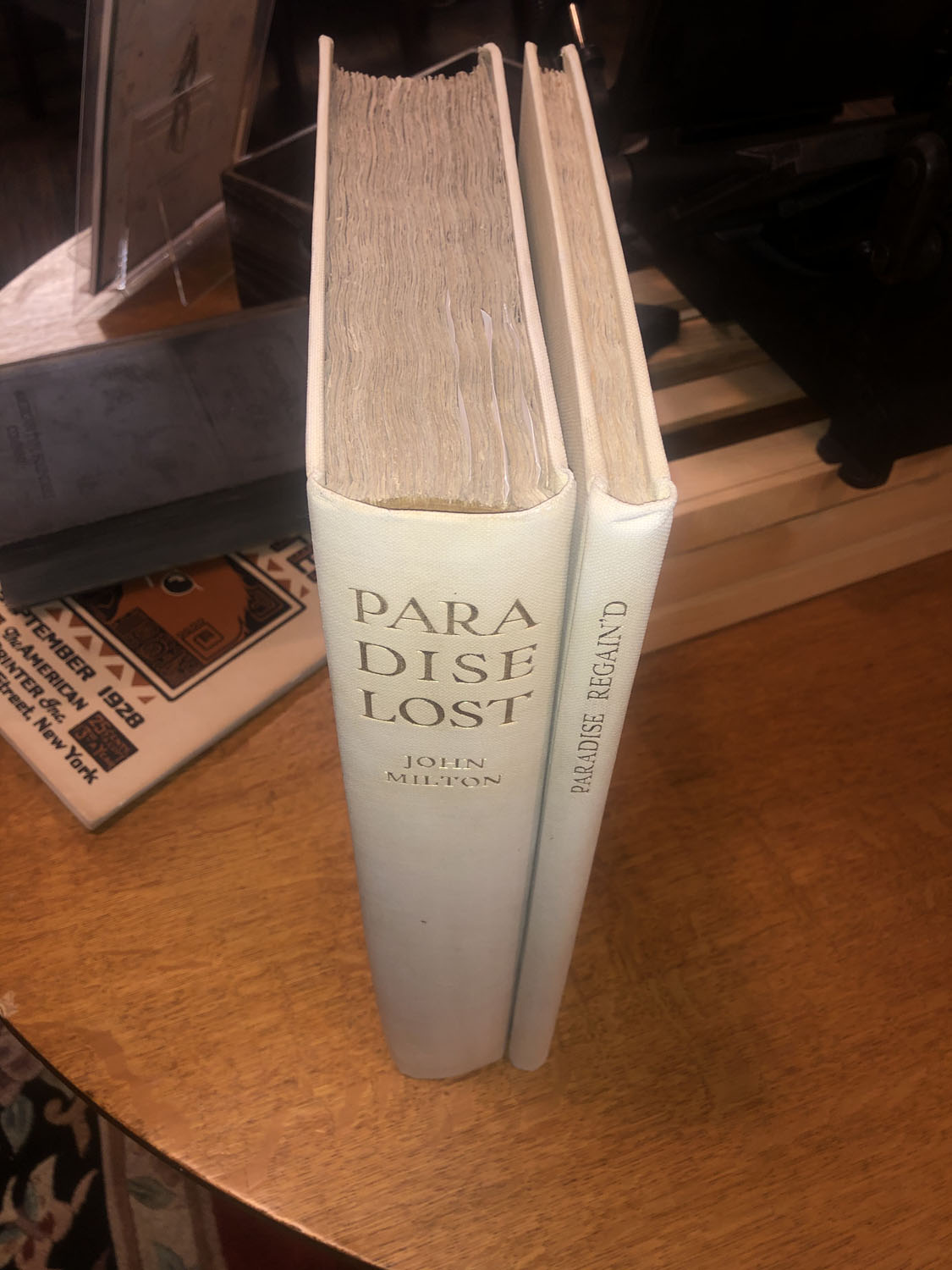
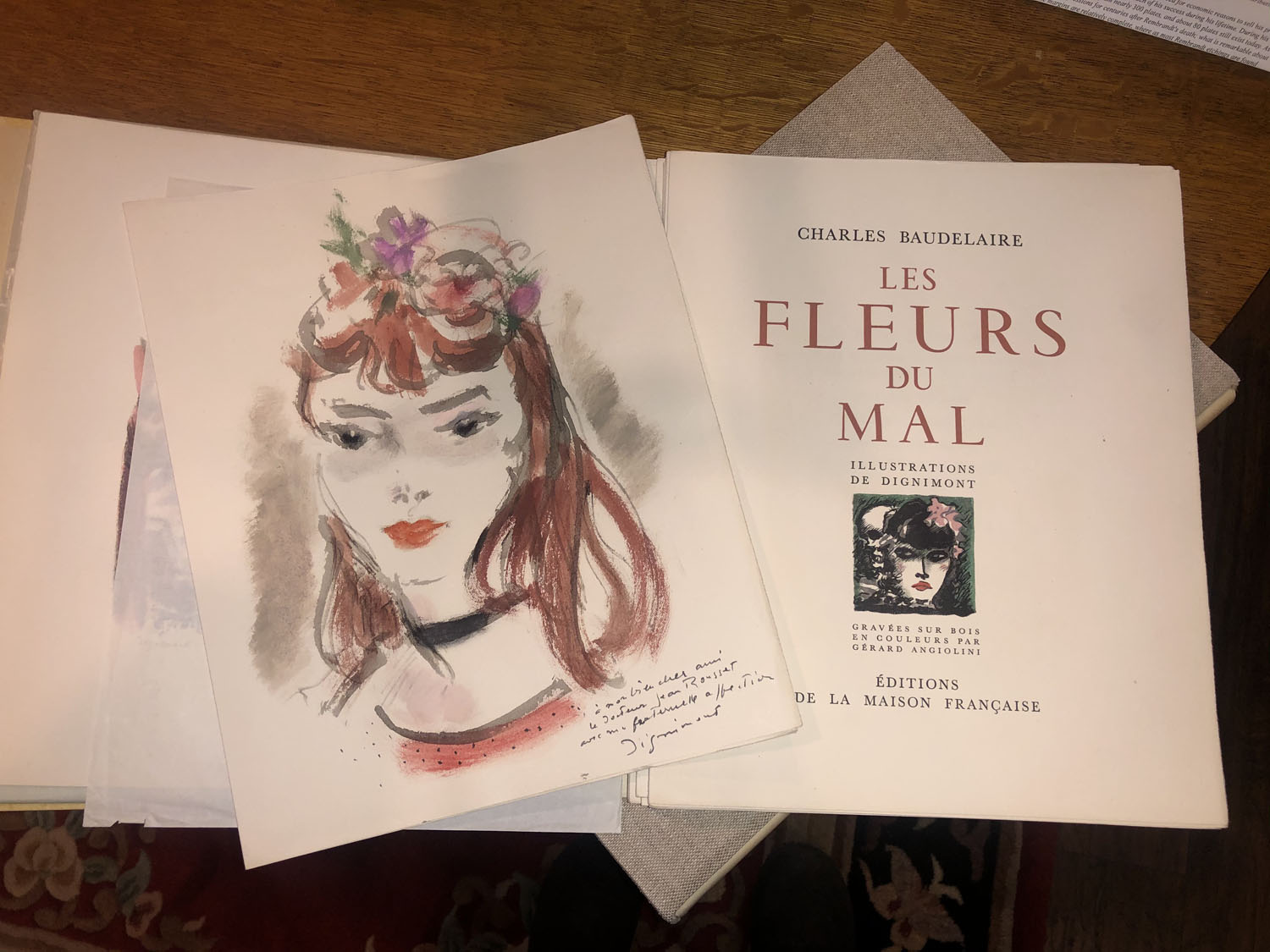


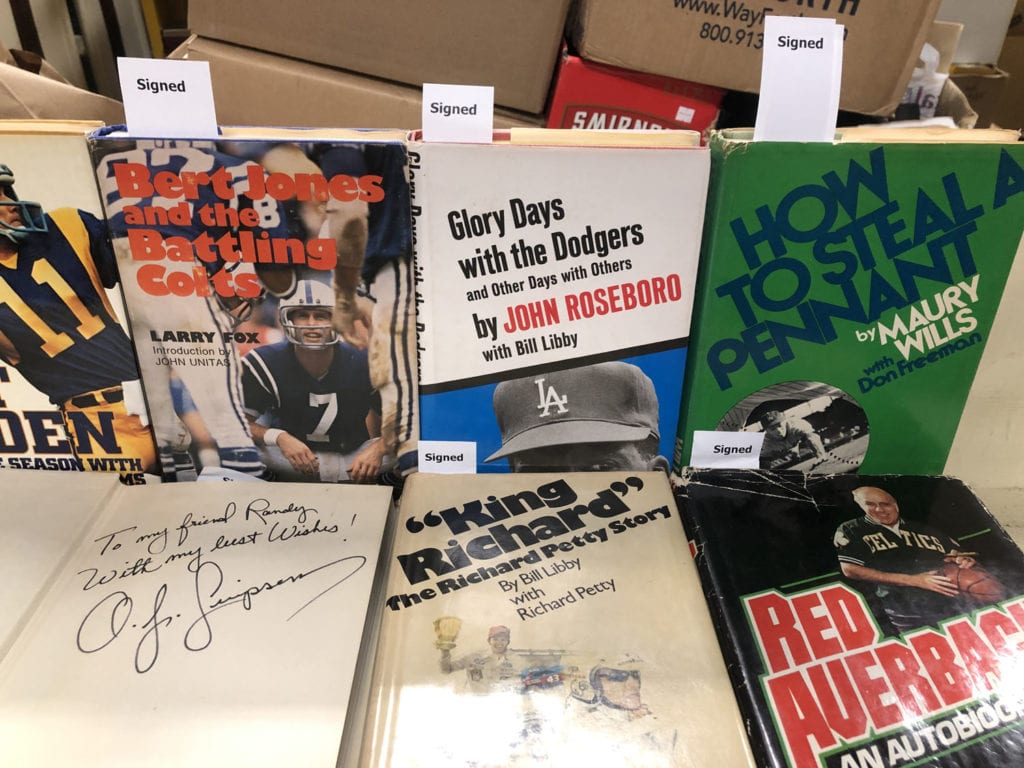
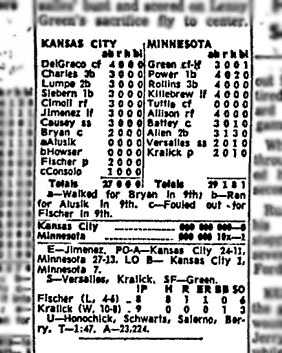
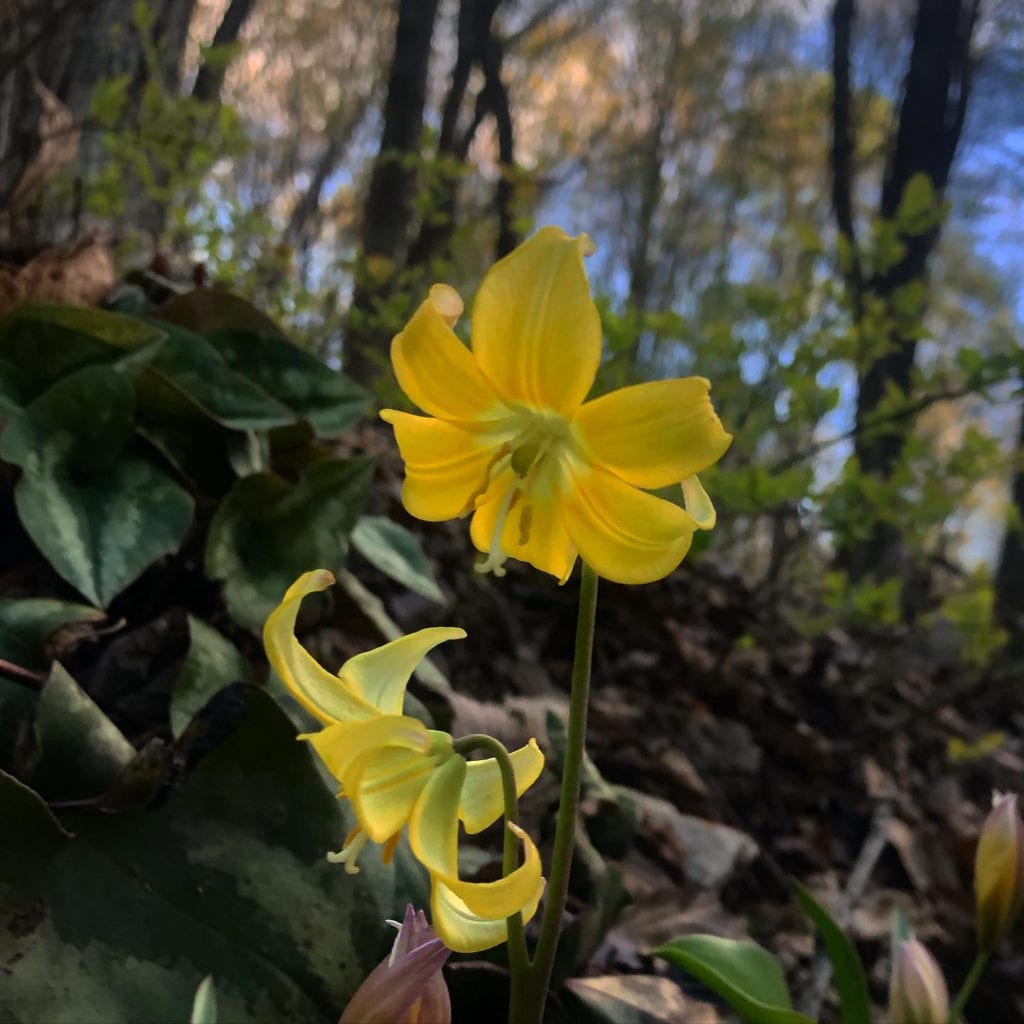
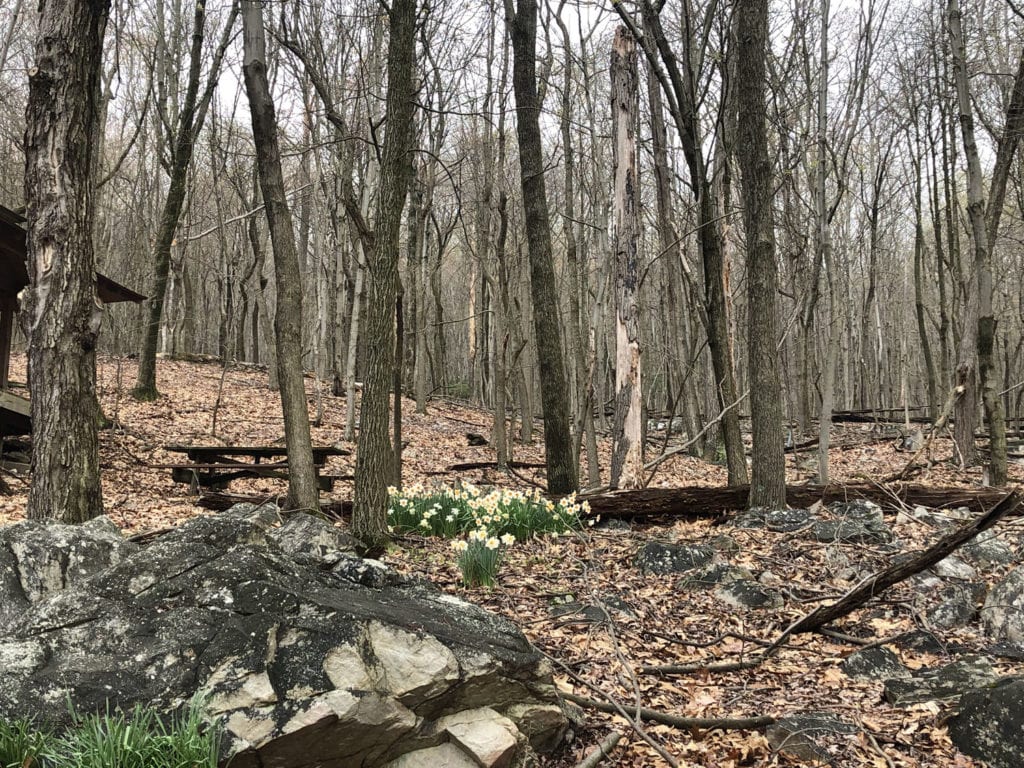
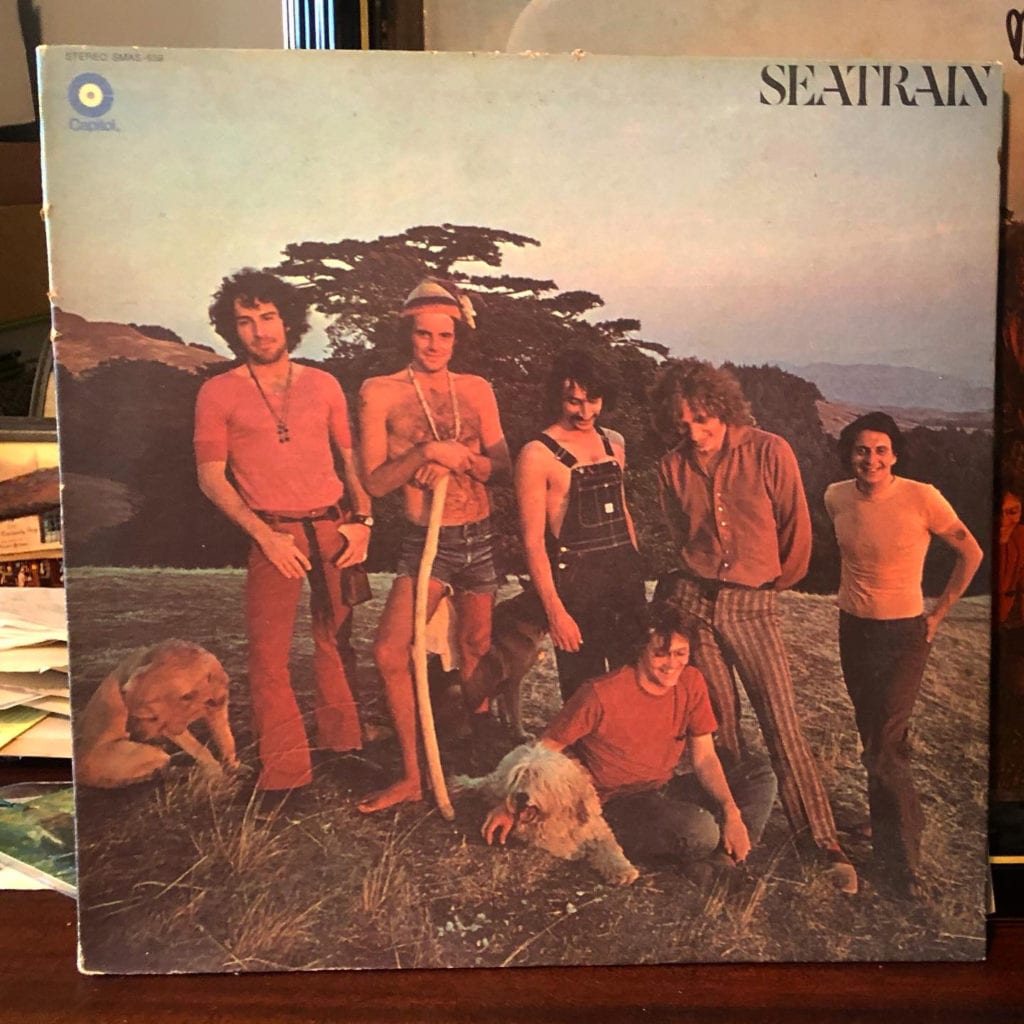
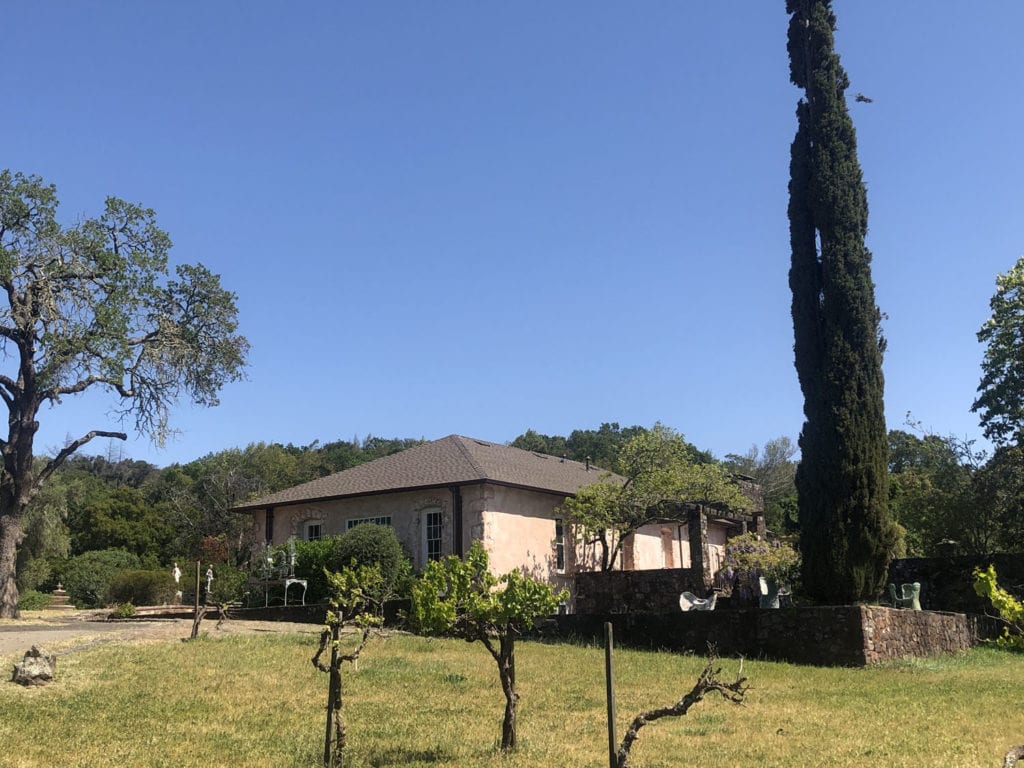
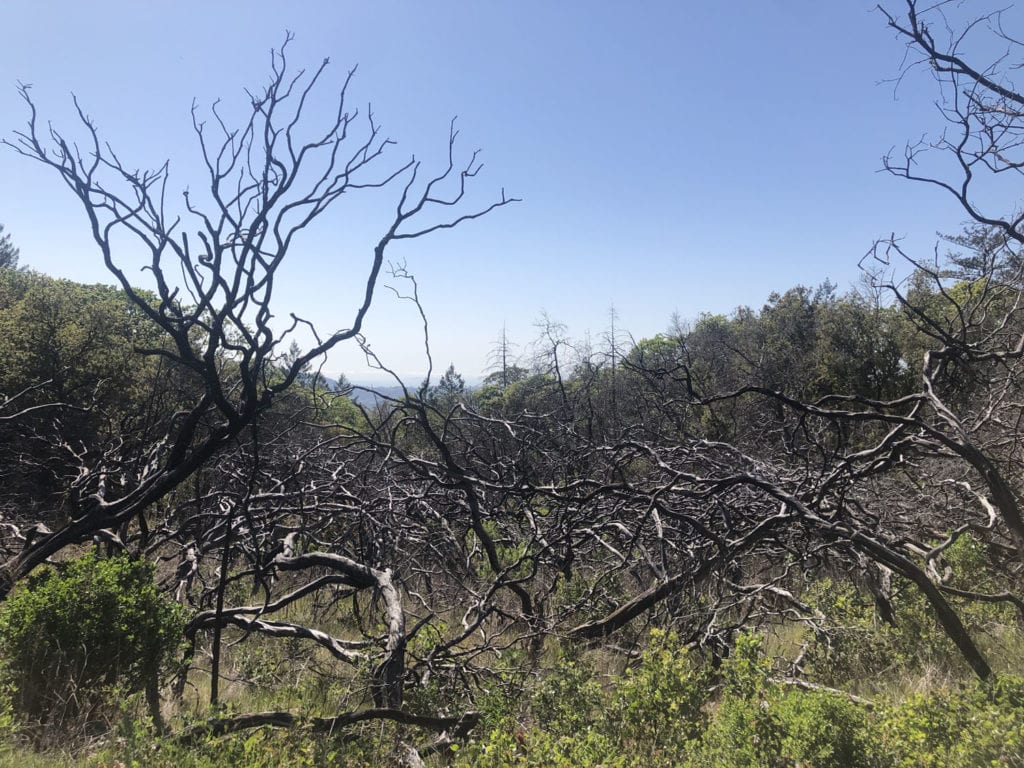
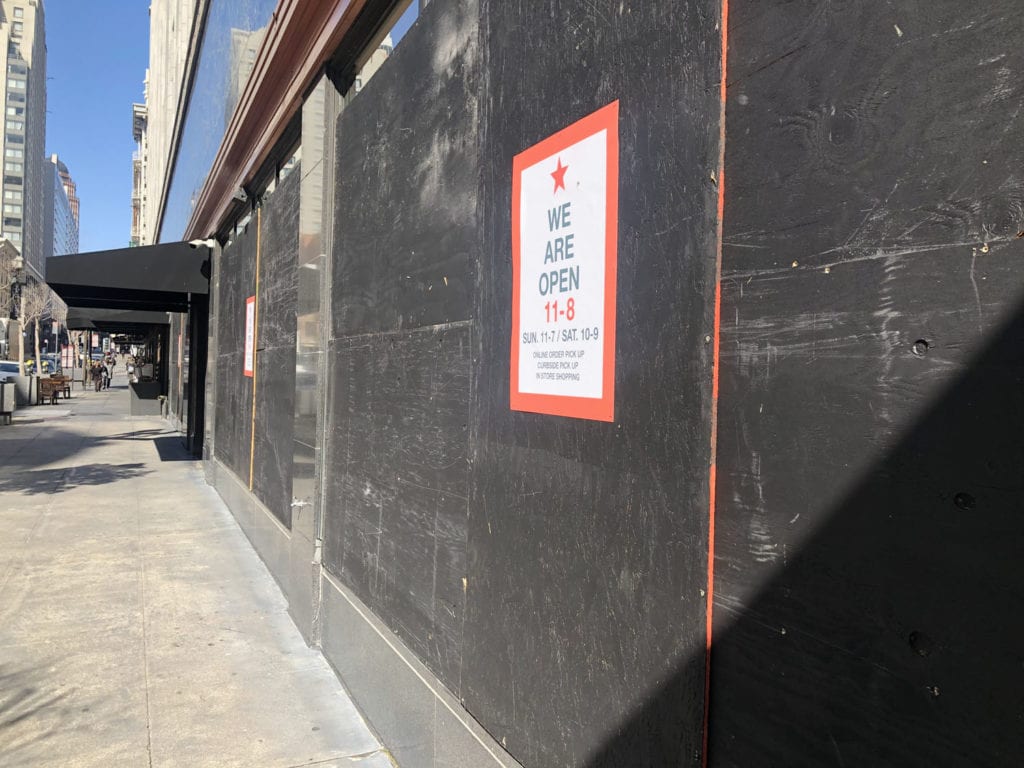
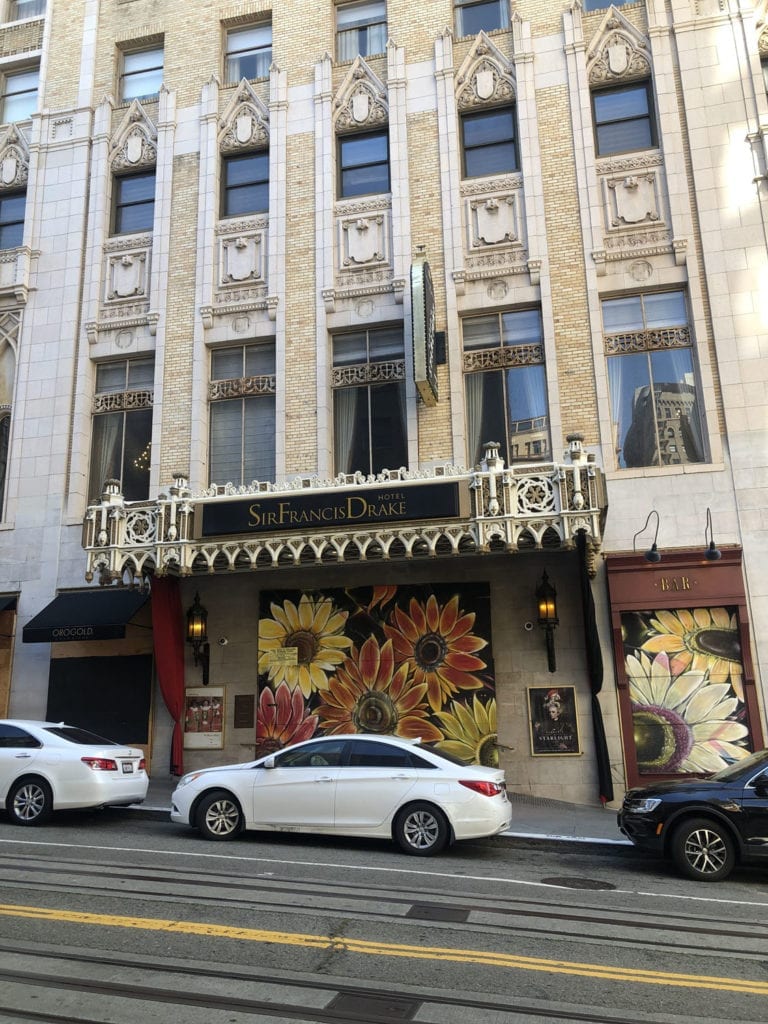
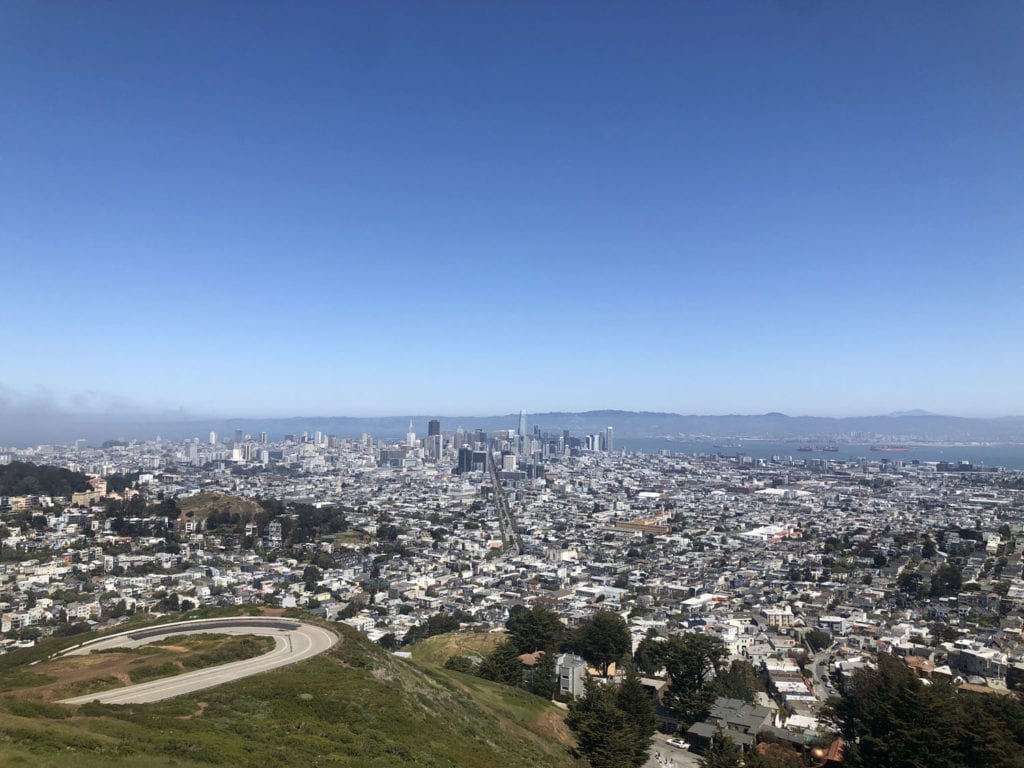
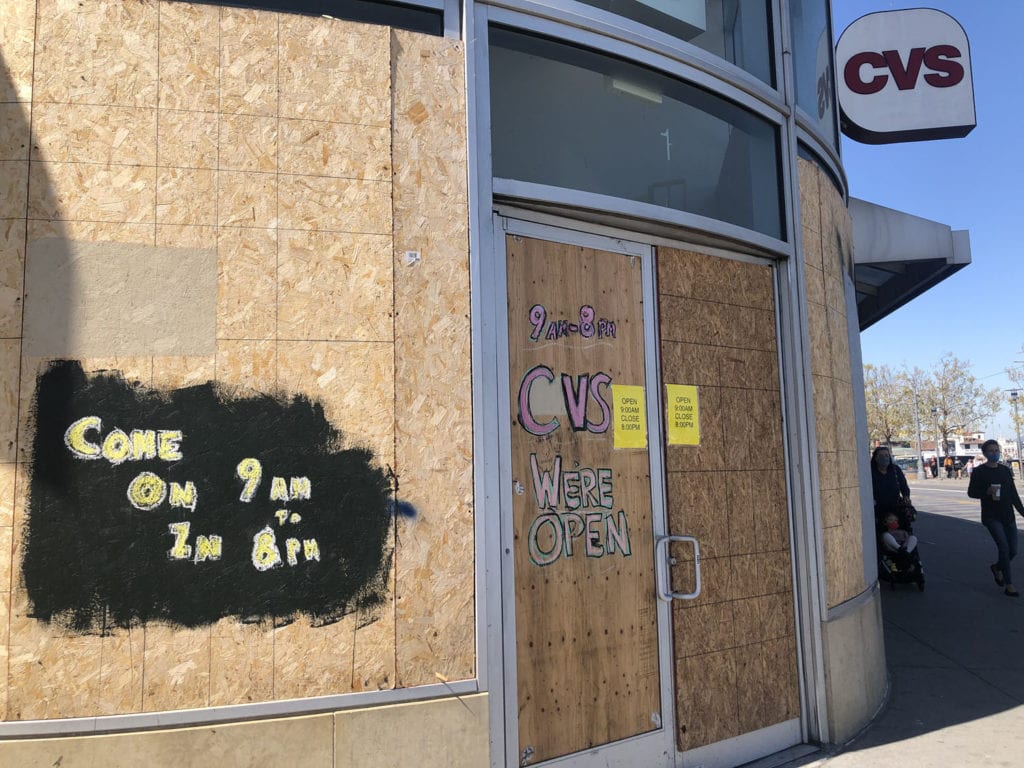
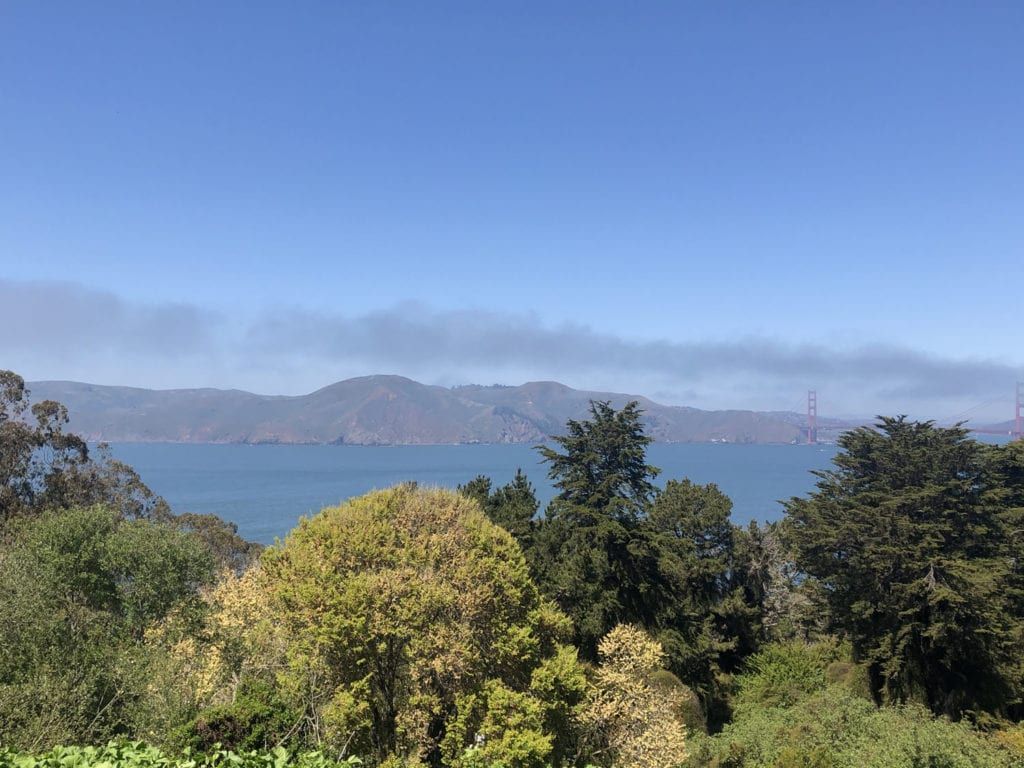


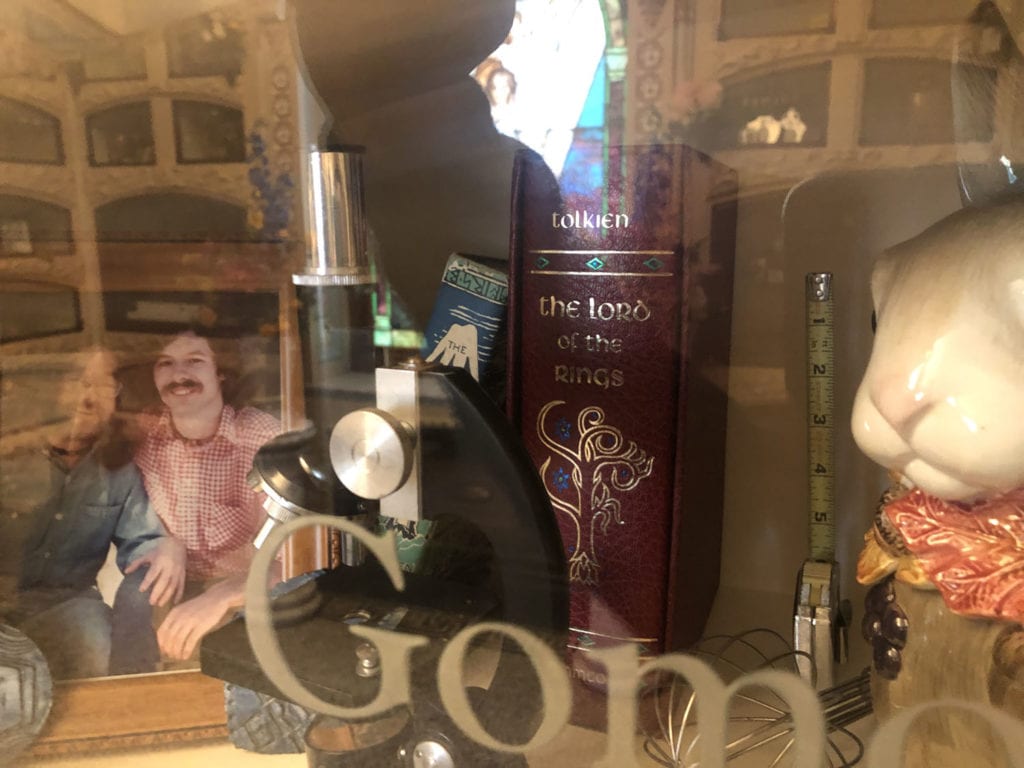

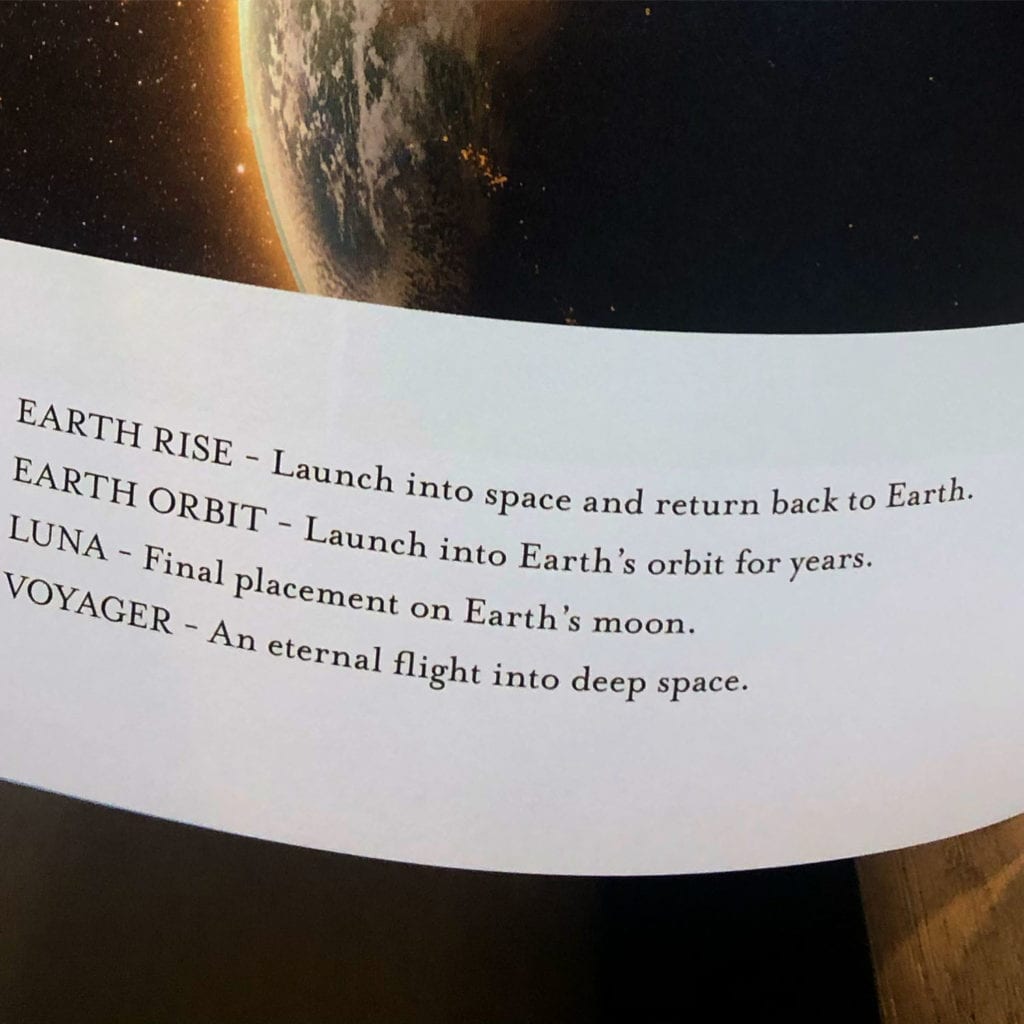
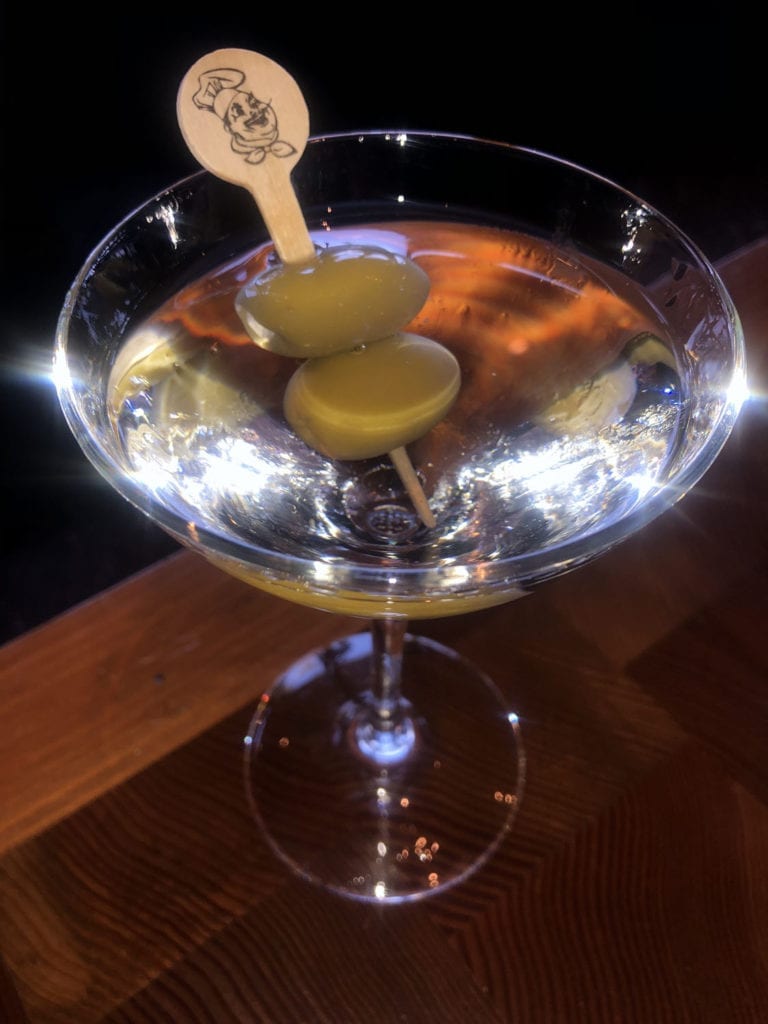


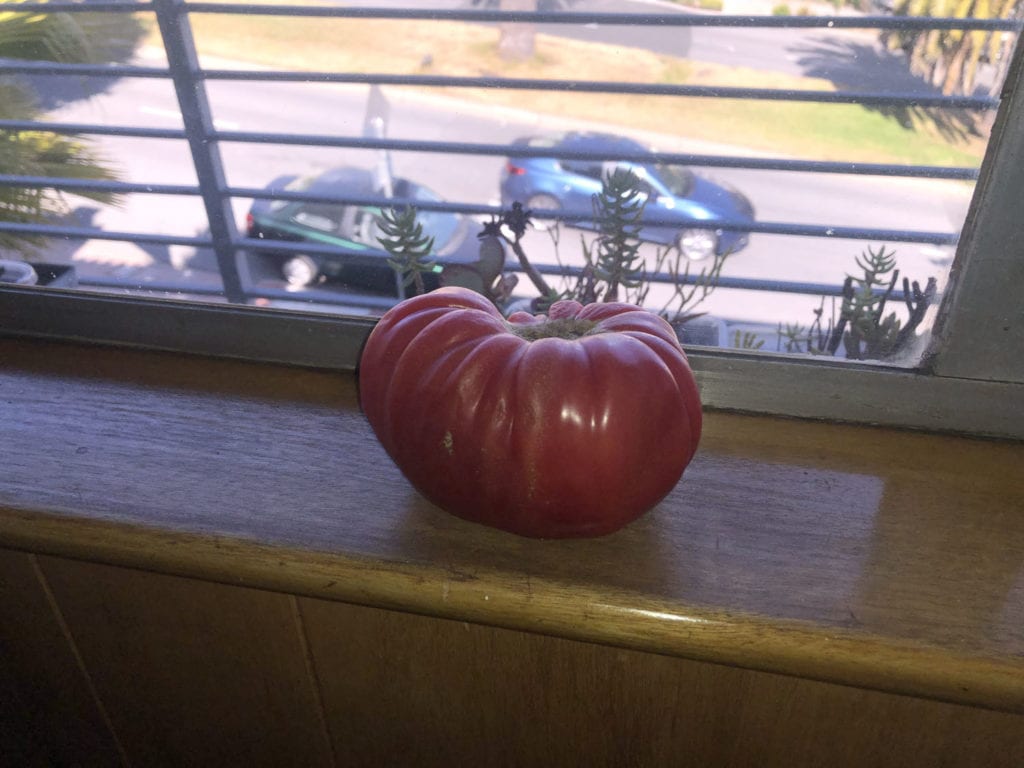
Wow–just wow! Thank you so very much for sharing your travel and the memories of you and your brother–taste the tomatoes, become one with the VW.
LOL…thank you.
I just remembered he tried to teach me how drive a clutch when I was 16 – in his green VW bug!
I didnt do very well on a hill and he was worried I’d burn out his clutch.
Thank you so much for reading and writing!
Chuck
Chuck, I loved Tony’s tomatoes story! Though the nearest I get to those great tomatoes is to wait for when they appear at the Takoma Park Farmers Market.
Your visit to Swan’s Books sounds wonderful. I looked at part of her list of artists books and saw many by Charles Hobson, wish I could open a few to look. Have one, a trade edition, and it’s very fine.
In 1990, I visited Califia Books in SF and discovered the wonderful artists books of Alisa Golden. SF may not be good for growing tomatoes, but it sure is good for growing artists books.
Regards, Rick
Laurelle has beautiful books and most are not online – yet.
She is listing books every day on the ABAA public site.
Yes, tomatoes were always a part of the family life.
I’ll be planting next week.
Thanks Rick!
Chuck
I love your brother’s story (memoir) about tomatoes! May he rest in peace.
Thank you so much for reading and writing Gregory.
It is a great life motif – tomatoes from childhood to age.
I’ll be planting tomatoes next week.
Best
Chuck
Thank you for the gift of your heart’s view of the long days of goodbye to your brother. His tomato story a warm hug to those of us that grew up eating sun warm tomatoes with salt in the garden.
Thank you Susan.
Writing that helped me work through the last weeks.
I’ll be planting tomatoes this week!
Chuck
This is over a year late, but I just want to let you know I am so sorry for your loss.
I enjoyed your brother’s story……
Livia
Thank you Livia!
Writing it out helped a lot.
Chuck